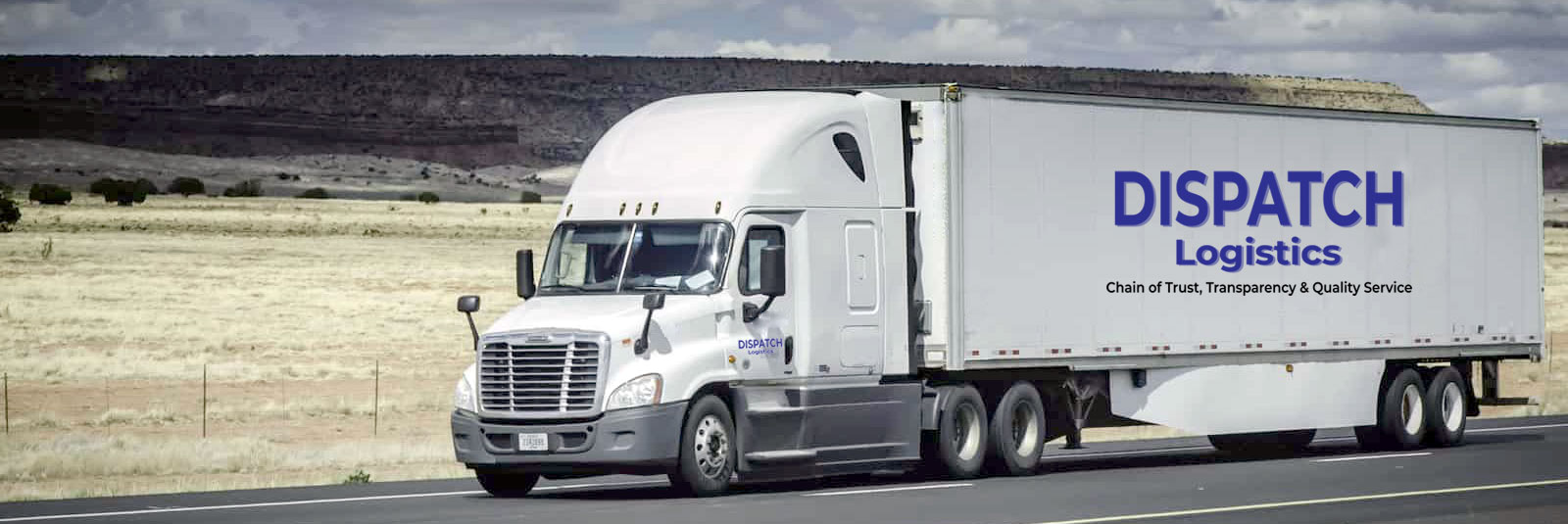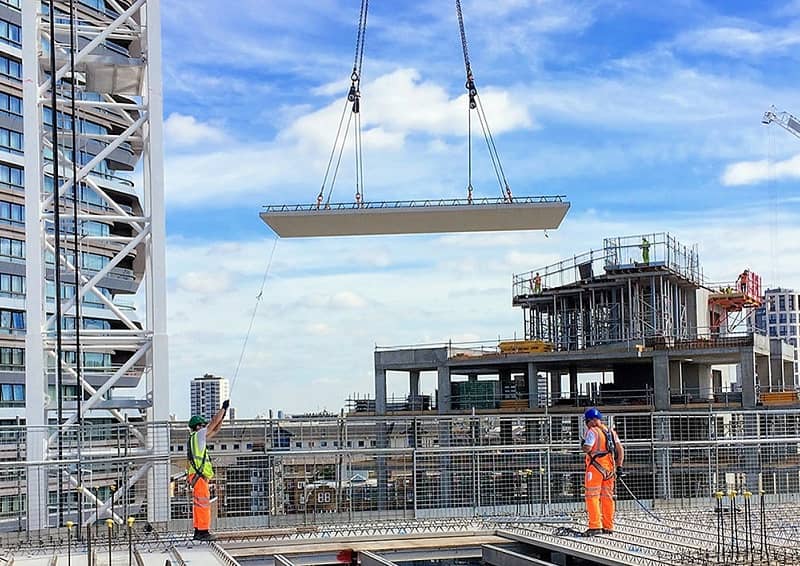 Call at :
+86 18681515767
Call at :
+86 18681515767
 Email :
marketing@jtspeedwork.com
Email :
marketing@jtspeedwork.com
 Call at :
+86 18681515767
Call at :
+86 18681515767
 Email :
marketing@jtspeedwork.com
Email :
marketing@jtspeedwork.com

The progress of autonomous driving is often described as a competition in algorithms, computing power, and sensors. In reality, it is increasingly becoming a systems challenge—one that depends on how effectively vehicles and roads can work together. Relying solely on cameras, millimeter-wave radar, or LiDAR still leaves autonomous vehicles vulnerable to unstable recognition, environmental interference, and high system redundancy costs. Against this backdrop, RFID technology is being re-evaluated, gradually moving from logistics and manufacturing into intelligent road infrastructure and RFID vehicle management systems. From “Seeing” the Road to “Understanding” It Most autonomous vehicles today interpret road conditions through visual and radar-based perception. Lane markings, traffic signs, signals, and obstacles are detected passively, based on what sensors can observe at a given moment. Under ideal conditions, this works well. However, rain, snow, fog, glare, worn lane markings, or temporary construction zones quickly expose the limits of this approach. The road itself remains silent, offering no direct confirmation of what a vehicle believes it sees. RFID markers change this relationship. By embedding RFID tags into key road elements—lanes, intersections, speed-control zones, construction areas, and roadside infrastructure—the road gains a digital identity that can be read directly by vehicles. With properly designed UHF RFID antennas installed on vehicles or embedded near the roadway, information can be captured reliably without dependence on visibility or lighting conditions. How RFID Is Deployed in Intelligent Road Systems In road environments, RFID typically takes the form of passive UHF tags or ruggedized, weather-resistant markers installed beneath the road surface, along curbs, within guardrails, or inside traffic facilities. Autonomous vehicles equipped with onboard RFID readers can automatically detect these markers as they pass, without any active interaction. To support stable reading at driving speeds, vehicles often integrate a long-range RFID reader module, allowing tags to be identified early enough for decision-making. Each tag can store standardized information such as road classification, speed limits, lane attributes, intersection identifiers, or warnings related to temporary conditions. When integrated with high-definition maps and vehicle control systems, RFID enables vehicles to anticipate road conditions rather than react to them. Enhancing Positioning Accuracy Where GPS Falls Short High-precision positioning remains one of the most difficult challenges in autonomous driving. Even when combining GNSS, inertial measurement units, and visual SLAM, location drift can occur in tunnels, dense urban areas, or locations with poor satellite coverage. RFID markers provide fixed physical reference points. Each time a vehicle reads a tag, it can recalibrate its position with high confidence. This approach has proven particularly val...
Against the backdrop of carbon neutrality goals and the growing emphasis on the circular economy, waste recycling is no longer a simple process of collection, transportation, and dismantling. Instead, it has evolved into a systematic project encompassing product design, usage management, recycling traceability, and resource regeneration. In practice, low recycling efficiency, unclear sources, opaque material flows, and weak accountability continue to constrain the large-scale development of green recycling systems. Enabling waste items to be identified, understood, and tracked throughout the recycling process has become a critical challenge. RFID technology is emerging as a powerful solution to this problem. From Anonymous Waste to Digital Identity In traditional recycling systems, most waste items lose their “identity” once they enter the recycling stage. Recycling enterprises often rely on visual inspection, experience, or manual sorting, resulting in low efficiency and high error rates. By embedding RFID tags into products or packaging, each item is assigned a unique digital identity from the very beginning. For large-scale consumer goods and packaging waste, UHF RFID stickers provide a cost-effective and scalable solution, allowing product information such as model, material composition, production batch, service life, and maintenance history to be stored and retrieved efficiently. When the product reaches the end of its usable life and enters the recycling stream, RFID readers can instantly identify and extract this data. Waste items are no longer silent resources—they become data carriers capable of “communicating” their remaining value. Building a Fully Traceable Lifecycle Chain The core of green recycling lies in full lifecycle management. The value of RFID extends far beyond the recycling stage and runs through every phase of a product’s life, from manufacturing and distribution to use and disposal. During production, RFID tags record material sources and environmental attributes, laying the foundation for future disassembly and reuse. In industries involving metal components, electronic assemblies, or high-temperature processes, RFID ceramic antennas ensure stable tag performance under harsh conditions, enabling reliable identification even after prolonged use or exposure. During circulation and usage, RFID supports asset management and reduces losses and excessive consumption. At the end-of-life stage, systems can automatically determine whether an item is suitable for remanufacturing, component recovery, or material-level recycling based on lifecycle data. This closed-loop data structure transforms recycling from an endpoint into the starting point of a new resource cycle, enabling recycling systems to become measurable, auditable, and continuously optimizable. Improving Efficiency and Reducing Operational Costs The recycling industry has long been characterized by high labor dependence and extensive management practices. RFID’s abili...

Over the past few years, the concept of the “metaverse” has transformed from speculative hype into a more grounded exploration. As virtual environments grow increasingly realistic, it has become evident that without stable, accurate and low-cost connections to the physical world, immersive digital life cannot fully materialize. In this context, RFID technology has regained strategic importance. Traditionally used in logistics, retail and transportation, RFID now plays a new role in virtual-physical fusion: enabling real-world people, items and assets to form trackable, computable and verifiable “digital twins” in the metaverse. To support this shift, hardware capabilities have also evolved. Modern RFID infrastructures now incorporate advanced components such as UHF RFID modules for high-speed identification, RFID ceramic antennas for compact and stable tag performance, and directional RFID readers capable of pinpointing tag orientation and movement—technologies that significantly enhance the precision required for metaverse applications. 1. The Core Challenge of Virtual–Physical Convergence: Missing Real-World Data Virtual worlds depend on rendering and simulation, but the real world’s behavior, object flow and identity states are just as critical. To achieve meaningful interaction between virtual and physical realms, several fundamental questions must be answered: — Who owns this physical object? — Where is it now? — Has it been used, borrowed or damaged? — Does it correspond to a virtual asset? — Can real-world changes be synchronized instantly? These questions seem simple but are difficult to automate at scale. RFID, equipped with high-performance UHF modules and flexible antenna designs, enables massive, real-time, low-maintenance data capture. Compared with QR codes, RFID is more automated; compared with Bluetooth, more economical; and compared with vision systems, more stable and not affected by lighting. Because of this, RFID is increasingly regarded as the foundational data bridge connecting physical and virtual layers. 2. RFID-Based Object Mapping: Giving Virtual Assets a Real-World Foundation Virtual assets in the metaverse are treated as collectible, tradable and displayable digital goods. Yet their connection to real-world items is often vague. RFID solves this by giving every physical object a unique, non-replicable electronic identity, which can be synchronized with cloud platforms or virtual environments. For example, in sneaker collecting, limited-edition toys or fine art, RFID tags—often using RFID ceramic antenna designs for compactness and durability—can store ownership, authenticity, usage patterns and transfer history. These data points become the backbone of the object’s digital twin. — Buy a physical collectible → automatically receive the same asset in the metaverse. — Resell the object → virtual ownership updates instantly. — Physical wear or repair → reflected in the digital version. This real-world anchoring makes virtu...

As urban logistics accelerates, new energy vehicles are becoming increasingly common across delivery scenarios. They are quieter, more economical, and better aligned with today’s environmental goals. Yet as fleets grow, the challenge shifts toward efficiency: how to assign the right vehicle to the right task, with the right battery status, at the right moment. Many logistics operators have encountered issues such as incorrect routing or poorly timed dispatching, which ultimately slow down the entire supply chain. Traditional dispatching depends heavily on manual registration and GPS tracking. But manual work is prone to errors, and GPS signals are often unstable near warehouses or parking structures. As fleets expand, these small inefficiencies accumulate into operational delays. This is why many companies have turned to RFID— not because it is flashy, but because it provides exactly what the logistics industry values most: stable, accurate, and automated data collection. To improve identification accuracy, operators deploy UHF RFID antennas, 3dBi RFID antennas, and sometimes UHF gate readers at vehicle entrances, loading bays, and battery-swap areas. These devices automatically read vehicle tags as they pass through, without requiring the vehicle to stop or the operator to scan manually. Dispatch centers receive real-time entry and exit updates, allowing them to track fleet movement with far greater clarity. What once required repeated phone calls or manual confirmation is now completed within seconds. Battery management remains the most crucial component of operating new energy vehicles. It directly affects range, availability, and safety. In the past, issues such as battery mixing or unclear health records were common. By tagging each battery and pairing the data with a UHF RFID module embedded inside swap stations, operators can accurately track battery cycles, health conditions, and usage history. Some stations also use directional readers to prevent cross-reads when multiple vehicles enter the zone at the same time, ensuring a clean and reliable swap process. RFID is not designed to trace continuous vehicle movement, but it excels at logging “key operational nodes.” Every time a vehicle passes a loading gate, charging point, or checkpoint, the system updates the timeline automatically. In outdoor yards or long-distance lanes, long-range modules extend the reading zone so the dispatch platform can detect vehicle arrival earlier and respond more quickly. This early sensing is especially helpful for high-turnover distribution hubs. These node-based records make dispatching far more structured. Dispatchers gain access to real usage metrics: idle mileage, operational bottlenecks, route efficiency, and regional workload peaks. Decisions that once relied purely on experience are now supported by measurable data. Fleet utilization improves, unnecessary trips are minimized, and the operational value of new energy vehicles becomes more fully realized...
As workplace models continue to evolve, more companies are realizing that improving efficiency is not only about tightening workflows. It also involves making better use of space, managing shared devices, and ensuring transparent access to information. In many offices, conflicts over meeting rooms, misplaced equipment, and time-consuming manual checks have long been seen as unavoidable. Employees lose time searching for available rooms or shared devices, while administrative teams struggle with tracking and documentation. To solve these persistent problems, companies need a technology that works quietly in the background—automated, reliable, and capable of linking different systems. That is why RFID has become a key part of modern smart office scenarios. 1. Common Pain Points in Traditional Offices Among all office resources, meeting rooms are often the biggest source of frustration. People book rooms but do not show up; others occupy a room without a reservation; and even with scheduling platforms, the actual usage often differs from what is displayed. Asset management brings its own difficulties. Laptops, projectors, tablets, testing tools, samples—even toner and paper—need to be logged and tracked. Who borrowed what, whether it has been returned, and where the item currently is are details that usually rely on manual records, which are slow and easily inaccurate. Routine inspections are another underestimated cost. Checking meeting rooms, storage spaces, and equipment lockers takes time and often provides outdated information. As a company grows, the inefficiencies become more pronounced. RFID provides a practical way to make these issues manageable. 2. Making Meeting Rooms Truly “Smart” with RFID Installing RFID readers at meeting room entrances and embedding RFID chips in employee badges may sound simple, but together they reshape how meeting rooms are managed. In many setups, companies use a directional RFID reader at the door to precisely identify who is entering or leaving, reducing false detections and ensuring accurate check-in data. When an employee walks into a room, the system automatically recognizes the badge and confirms whether the person is part of the reservation. There is no scanning or tapping required—the check-in process happens automatically. If a meeting ends early, the system releases the room based on real exit activity; and if no one shows up after the reservation starts, the room turns available again. This significantly reduces empty reservations and double-booking, while giving everyone a real-time view of room availability. The data can also trigger lighting and HVAC. When a meeting begins, lights and air-conditioning turn on automatically; when people leave, everything shuts off—saving energy effortlessly. Much of this automation is enabled by compact hardware built around a UHF RFID module, which allows fast tag recognition and stable performance even in high-traffic office environments. 3. Asset Tracking Without...

In recent years, many companies have been talking about “unmanned warehouses,” yet very few have genuinely achieved it. Even in highly automated facilities, essential tasks such as scanning, confirming, and dispatching still rely heavily on people. To create a warehouse that can operate without manual intervention from inbound to outbound, equipment must be able to recognize materials, understand tasks, and execute actions autonomously—not merely repeat mechanical routines. The integration of RFID and AGV technologies is becoming a key driver of this transformation. In conventional warehouse operations, barcodes and QR codes are widely used for identification. However, both require manual alignment and manual triggering. Whether it's scanning inbound pallets or validating inventory, a human operator must hold the scanner, aim the laser, and confirm the result. Once human involvement is required, mis-scans and missed scans are inevitable. At the same time, AGVs can navigate and move goods automatically, but they don’t actually know what they are carrying. They simply follow programmed routes and tasks. Without material-level awareness, AGVs remain “automatic” but not “intelligent.” RFID changes the entire foundation. It gives every material an “electronic identity.” Unlike barcodes, RFID does not require line-of-sight, nor does it require someone to hold a scanner. Dust, packaging, or angle does not affect reading performance. As an AGV passes by, the onboard RFID reader automatically identifies the pallet or container: material ID, batch number, quantity, or even the current task status. As long as goods enter the warehouse, they become traceable digital entities—allowing AGVs to operate with context, not blindly. When storage locations are also equipped with RFID tags, accuracy improves even further. As an AGV approaches a shelf, it reads the location tag and checks it against the assigned destination. If the data doesn’t match, the AGV will not proceed with shelving. This eliminates the long-standing problems of wrong-putaway and wrong-pick, which are common in barcode-based warehouses. Material handling no longer depends on operators’ judgment. Instead, verification becomes automated and systematic—a crucial requirement for stable, unmanned warehouse operations. Beyond identifying goods and locations, RFID allows warehouses to shift from manual task triggering to event-driven task automation. For example, when inbound goods arrive in the receiving area, RFID gates automatically detect the items and update their status to “awaiting putaway.” The system immediately generates a task for an AGV, which proceeds to pick up the pallet without waiting for human dispatch. Similarly, when a production line is running low on materials, the shelf’s RFID tag reflects the reduced quantity. The system instantly triggers a replenishment task. AGVs respond in real time, without human supervision or instructions. This state-driven automation is a defining featu...

As digital transformation accelerates across the construction industry, the management of tool and equipment rentals is entering a new stage of modernization. Traditional practices that rely heavily on manual registration and paper-based records often lead to chaotic tool usage, frequent asset losses, inconsistent maintenance schedules, and inefficient workflows. In large-scale construction projects with long timelines, dispersed personnel, and frequent movement of tools, conventional methods are no longer capable of supporting fine-grained management. RFID (Radio Frequency Identification) technology, powered by increasingly compact and industrial-grade devices such as UHF RFID modules, is becoming a core driver of intelligent tool rental management. It enables transparent equipment sharing, precise location tracking, and full lifecycle visibility across the jobsite. In traditional workflows, tools such as wrenches, measuring instruments, drills, and other frequently used or high-value devices circulate constantly within and beyond the jobsite. They are easily misplaced, mixed between teams, or inadvertently taken offsite. Manual documentation is time-consuming and prone to human error, which complicates responsibility tracing and disrupts cost allocation. The lack of reliable data also prevents managers from understanding true utilization rates, resulting in redundant purchases of tools that may already exist but cannot be located. Meanwhile, many power tools and precision instruments require periodic calibration or preventive maintenance, yet paper-based logs rarely maintain accuracy, creating potential safety risks. These challenges highlight the need for an automated, traceable asset management solution—precisely the gap that RFID fills. In an RFID-enabled rental management system, tags are attached or embedded across various equipment categories. Rugged anti-metal tags support heavy-duty tools, while miniature designs serve precision items. Readers are deployed at warehouse gates, jobsite entry points, intelligent tool cabinets, and even on vehicles. In high-traffic zones, companies increasingly use UHF gate readers to automatically detect tools passing through access points, ensuring every borrowing and return action is captured instantly. When workers retrieve tools from a smart cabinet, the system identifies their identity, the type of tools taken, and uploads the data to the platform. Handheld readers further accelerate inventory checks, allowing staff to scan hundreds of tools within seconds. RFID is also highly effective for loss prevention. When high-value tools exit through a monitored access point without proper authorization, the system triggers an alert. To further strengthen accuracy, some companies deploy directional RFID readers, which identify not only whether a tool passed a checkpoint but also its movement direction—entering or exiting—reducing false alarms and improving real-time visibility. After adopting these systems, ma...

As global awareness of sustainable development continues to grow, environmental protection and resource recycling have become crucial to urban management and industrial transformation. However, traditional waste management systems still face challenges such as poor information transparency, inaccurate classification, limited traceability, and low recycling efficiency. With the advancement of the Internet of Things (IoT) and Radio Frequency Identification (RFID) technologies, waste treatment and resource recovery are entering a new stage of digitalization. Because of its advantages in non-contact identification, rapid data collection, and full traceability, RFID has become an important driver of modern environmental management. How RFID Supports Environmental Management RFID is a wireless technology that enables automatic identification and data transfer. It consists of electronic tags, readers, and a data management platform. When an object with an RFID tag enters the range of a reader, the system automatically retrieves its identity and records relevant data without human contact. In waste management and recycling, RFID offers several distinct benefits. Each waste bin, container, or garbage bag can carry a unique RFID tag, allowing precise identification and classification. The entire process—from waste generation and collection to transportation and treatment—can be tracked in real time, ensuring transparency and compliance. Systems equipped with UHF RFID antennas and UHF RFID modules can connect to collection trucks, weighing devices, and cloud-based platforms, automating data capture and improving operational efficiency. The information gathered provides valuable insights for optimizing collection routes, improving classification accuracy, and supporting data-driven policy decisions. Real-World Applications of RFID in Waste and Recycling In smart cities, RFID has become a key tool for managing waste classification. Each garbage bin or bag is labeled with an RFID chip, while residents use smart cards or mobile apps to log their disposal. Collection vehicles fitted with directional RFID readers can automatically detect tagged bins, record collection times, and upload data to a central system. In several pilot programs in China, this system is combined with a point-based reward scheme—residents earn points for proper waste sorting, which can be exchanged for household goods or community services. This approach not only motivates participation but also provides measurable data for government oversight. Industrial waste management is another important application. Many factories produce hazardous waste that must be carefully monitored. RFID tags attached to waste containers enable real-time tracking of materials from generation to disposal. In chemical industrial zones, RFID systems equipped with UHF RFID antennas and GPS modules monitor each step of transportation. Any deviation from authorized routes or unauthorized unloading triggers an alert, ...
Categories
New Products
JT-6210 0-1m UHF RFID Desktop USB Reader Writer ISO18000-6C Read More
JT-7100 0-3m 860-960MHz UHF RFID Industrial Grade RFID Reader Read More
JT-8380 0-6m UHF RFID 860-960MHz Middle Range Integrated Reader Read More
JT-P983 Industrial Tablet Pad RFID Handheld Reader Grade Long Range Android UHF Terminal Bluetooth RFID Reader For Warehouse Read More
JT-1550 Small Mini HF RFID 13.56MHz Module ISO14443A ISO 15693 Protocol Read More
JT-2302A 13.56MHz RFID Module ISO14443A ISO15693 Protocol Read More
JT-2302 HF RFID 13.56MHz Module ISO14443A ISO15693 Support Mifare1 IC card Read More
JT-2540 TM200 UHF RFID 4-port Module 860-960MHz TTL Read More
Copyright © 2025 Shenzhen Jietong Technology Co.,Ltd. All Rights Reserved.

IPv6 network supported